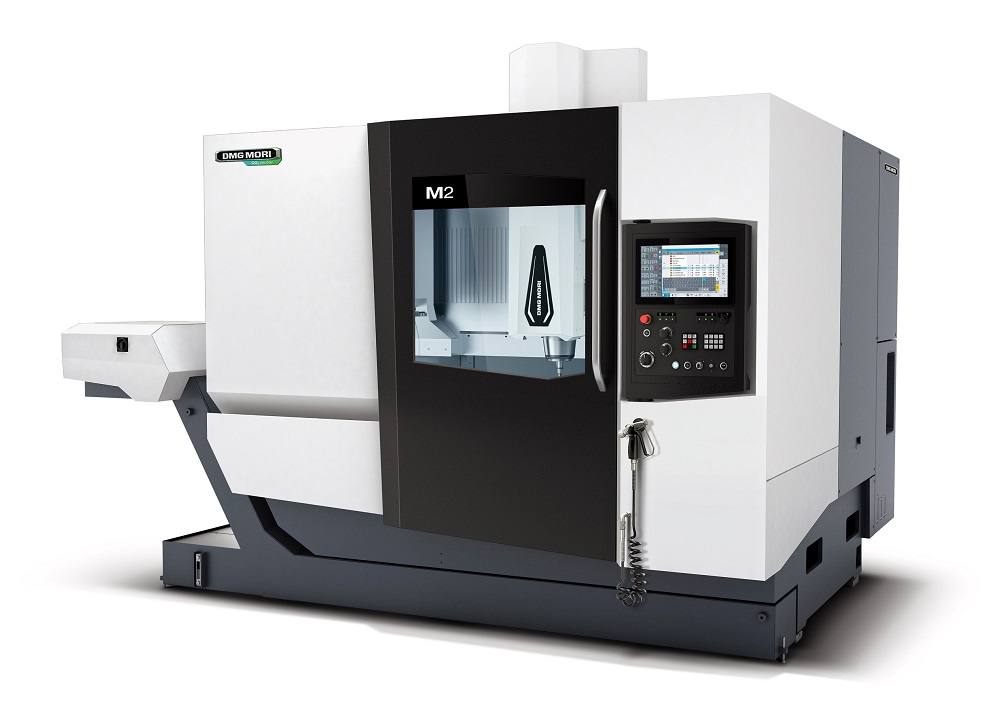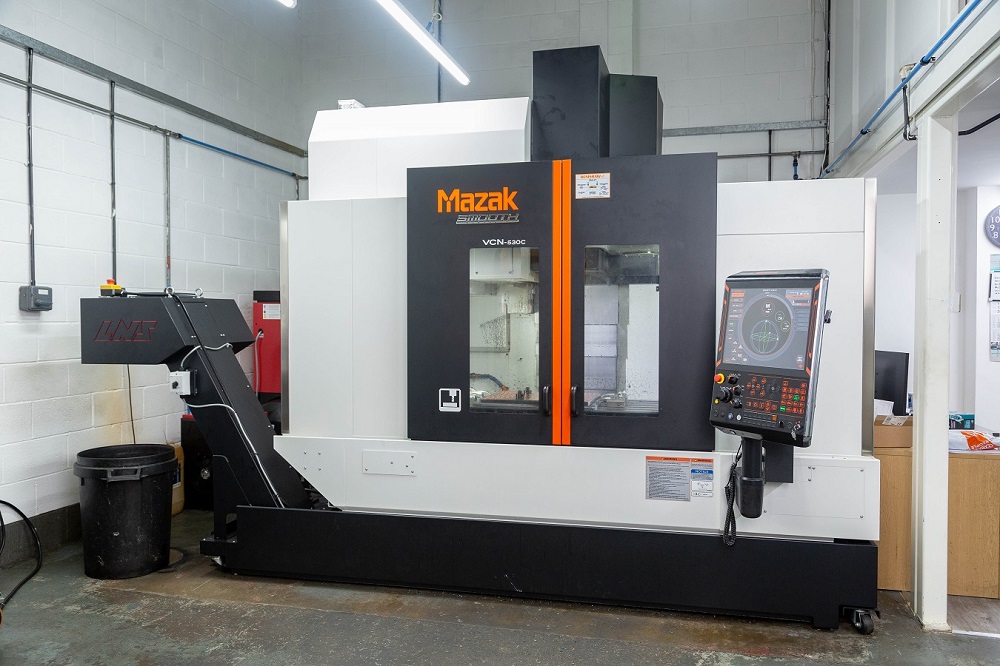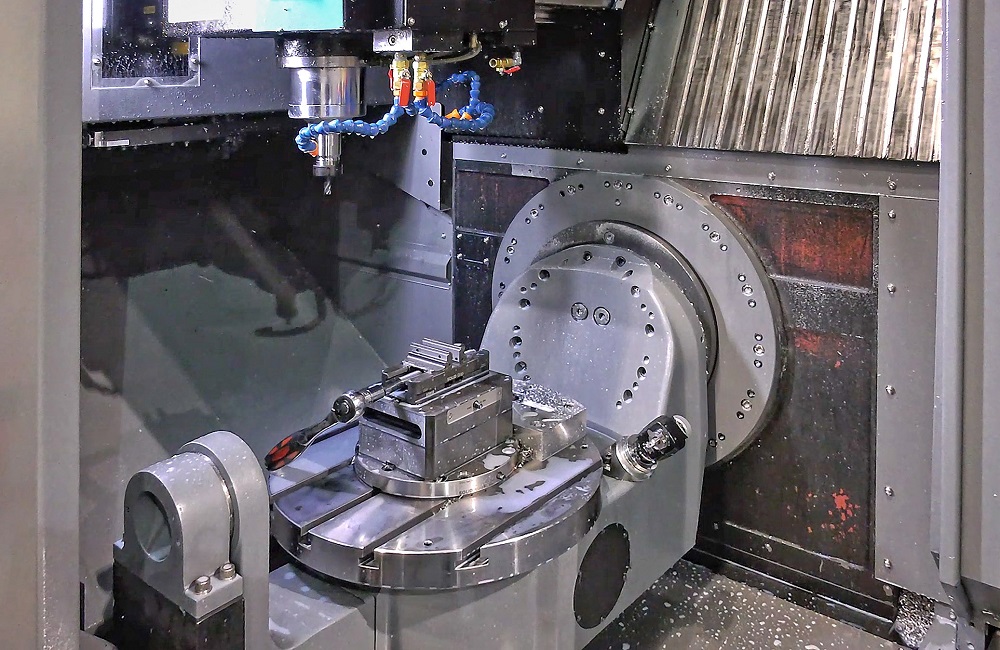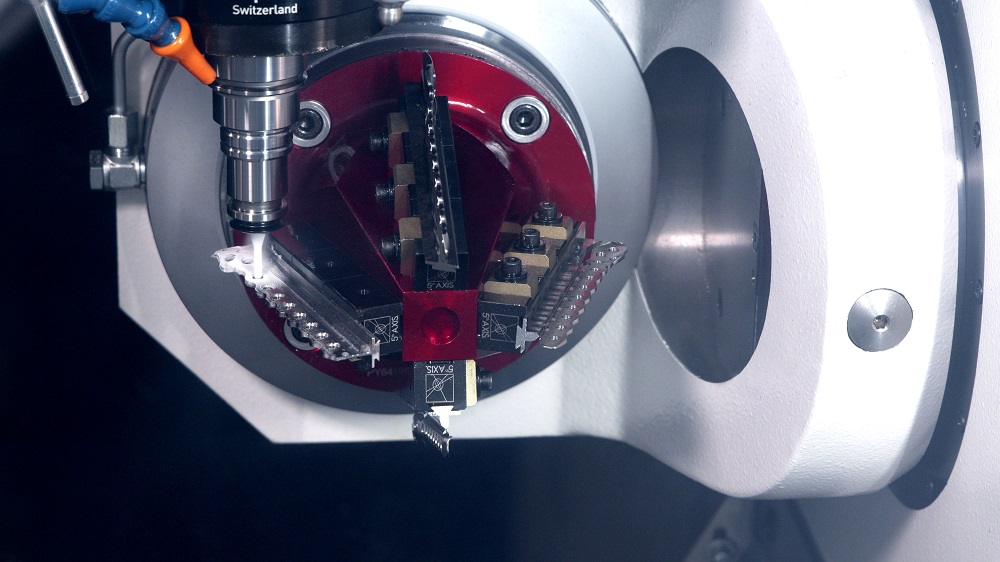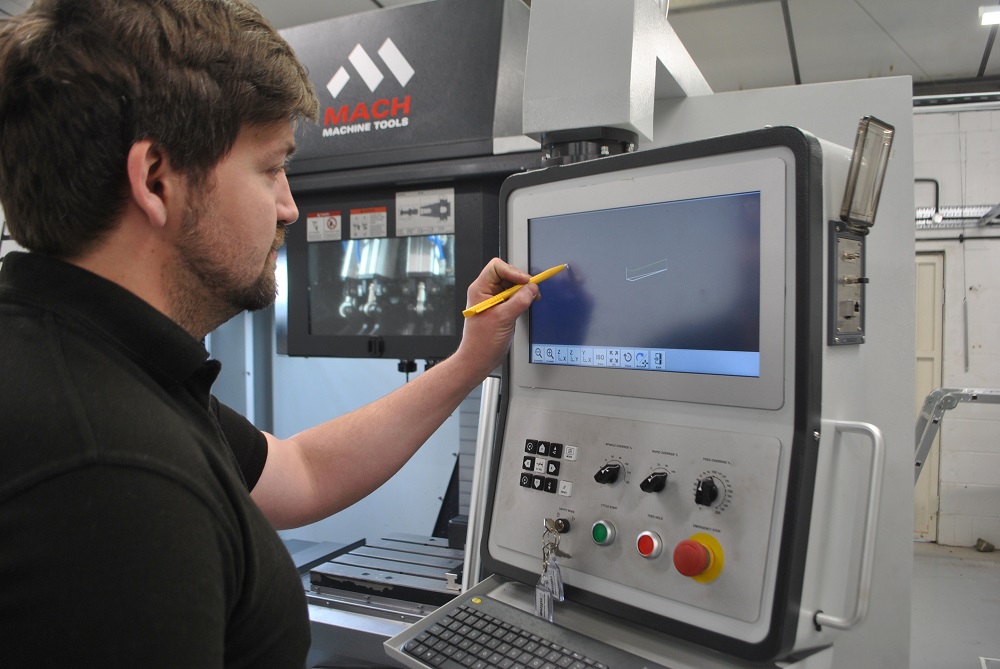Following the success of its M1 entry-level vertical machining centre, DMG Mori has introduced a larger version, the M2, with double the travel in the X axis at 1100 mm. The Y- and Z-axis travels are identical at 550 and 510 mm respectively, but maximum table load is nearly treble that of the M1, at 1700 kg.
The M2 retains the same fixed-table, travelling-column design, which minimises wear on the machine’s ballscrews and drives by not having to move the heavy table with its load to the spindle. Measuring 1400 x 600 mm, the clamping surface is sufficient to accommodate one large part or multiple smaller components set up in various fixtures (and even a 4th axis indexer) at the same time.
DMG Mori’s monolithic design of the thermally stable machine bed casting, which weighs 3400 kg, gives the M2 high rigidity and good damping properties. Minimal vibration, even when taking heavy cuts, protects the machine structure, provides long tool life and ensures good surface finish on machined components. The total installed weight of the machine is nearly 7 tonne in a compact footprint of only 7.3 sq m.
Users benefit from the choice of a 10,000 or 12,000 rpm inline spindle, of which the company has installed more than 4000 units worldwide, as well as a 24-pocket tool magazine and rapid double-gripper tool changer.
The M2 has roller guideways in all axes and machining dynamics are constant regardless of workpiece weight, report DMG Mori. A 20-bar internal coolant supply is optional. Control is via Siemens Sinumerik One touchscreen CNC, which has very few buttons, making it ideal for the new generation of setter-operators familiar with smartphones and tablets.
For further information www.dmgmori.com







